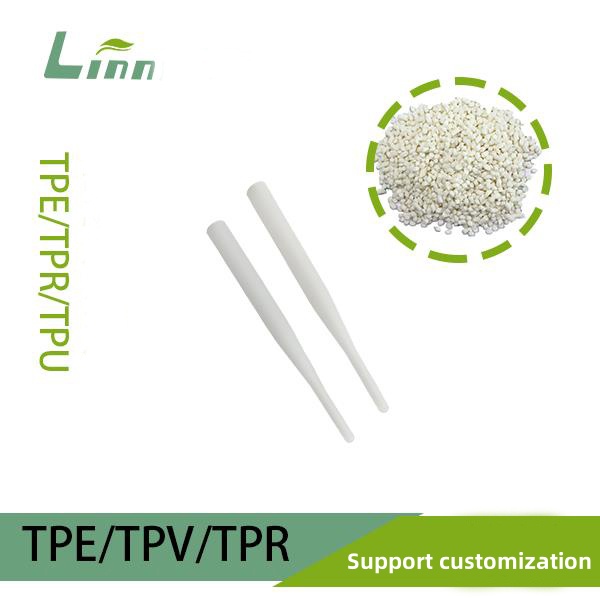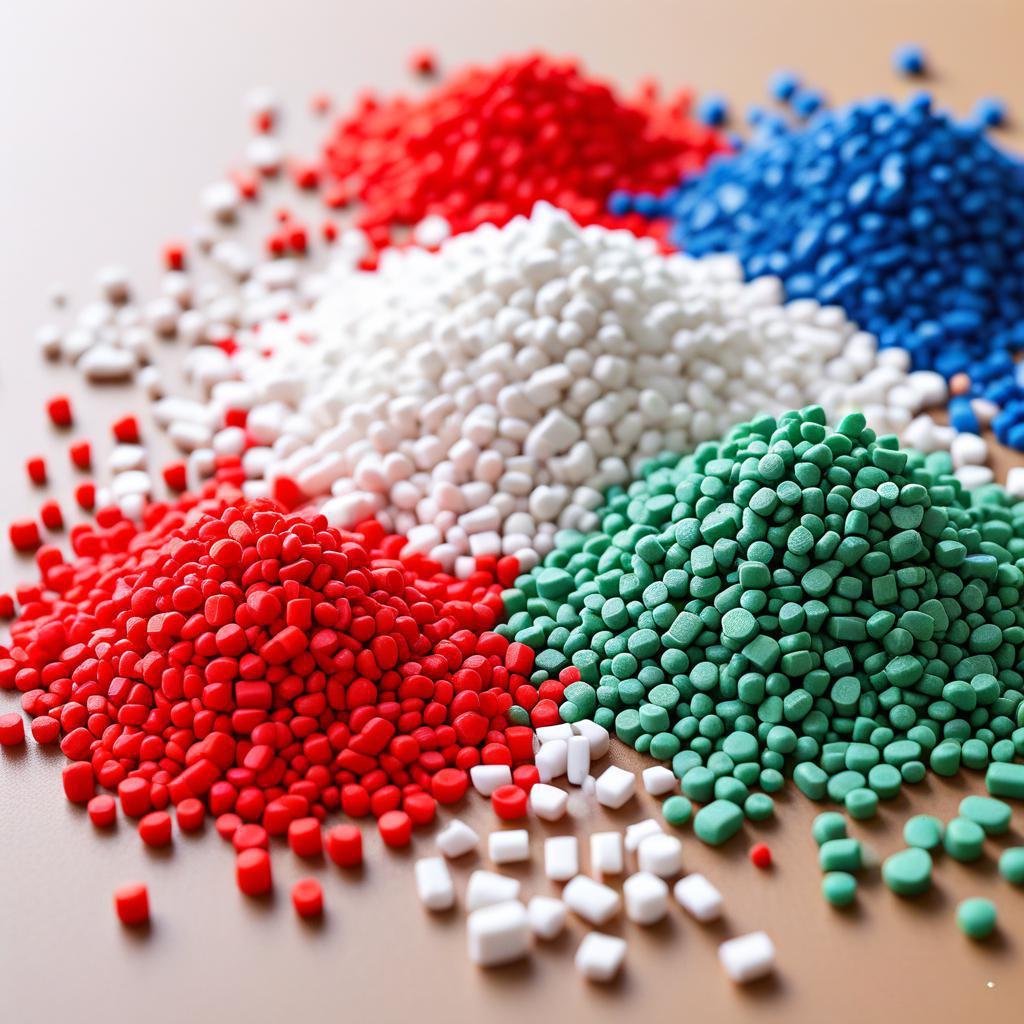Hello everyone, I’m a veteran in the injection molding industry, and today I’d like to talk about a common yet frustrating issue when working with TPE (thermoplastic elastomer) in injection molding—mold sticking. If you’re an injection molding worker or someone responsible for process adjustments in a factory, you’ve probably encountered this: you’ve finally dialed in the parameters, but the product just won’t release, leaving a sticky mess on the mold. It kills efficiency and affects product quality. Don’t worry—today, I’ll share my experience, along with some real-world examples, to walk you through how to tackle this issue in a way that’s easy to understand and packed with practical tips.

Why Does TPE Stick to the Mold During Injection Molding?
Let’s first figure out what’s causing this problem. TPE is a fantastic material that combines rubber-like elasticity with plastic processability, making it perfect for things like seals, hoses, or grips. But its properties also make it prone to “clinging” during molding. Here are the main reasons I’ve identified:
- Inherent Stickiness of the Material: TPE’s molecular structure includes soft and hard segments. Too many soft segments, and it gets sticky—especially with low-hardness TPEs.
- Poor Mold Temperature Control: If the mold is too hot, TPE turns “mushy” and sticks; if it’s too cold, it might not fully form, still causing release issues.
- Mold Surface Issues: Believe it or not, a surface that’s too smooth can create vacuum suction, while one that’s too rough lets TPE “grab” onto it.
- Improper Use of Release Agents: Some folks think spraying more release agent is the answer, but overdoing it can backfire, leaving the mold greasy and stickier.
- Incorrect Process Parameters: Things like injection pressure, holding time, and cooling time—if off—can make TPE bond too tightly to the mold.
I recall a time in the workshop when a rookie operator came to me in a panic because a machine wouldn’t release its parts. I checked it out: the mold temperature was set at 80°C, and the TPE was practically melting into the cavity. I dropped it to 50°C, tweaked the holding time, and the issue was gone. Finding the root cause is the key to fixing it.
Practical Solutions for TPE Mold Sticking
Now, let me share some tried-and-true solutions I’ve used over the years—ones I’ve tested myself and know work.
1. Optimize Mold Temperature
Mold temperature is absolutely critical. Generally, I recommend keeping it between 30-60°C, depending on the material grade and part thickness. For thin-walled parts, I go a bit higher; for thicker ones, a bit lower. For SEBS-based TPE, I usually set it around 40°C—great cooling and no sticking.

2. Adjust Process Parameters
The injection machine settings directly affect release. Here’s where I’d start:
- Injection Pressure: Keep it moderate—just enough. Too high, and TPE gets packed in too tight.
- Holding Time: Shorten it a bit—2-3 seconds is usually fine. Too long, and it sticks.
- Cooling Time: Extend it slightly to ensure TPE solidifies, but not so long that the mold retains too much heat.
Once, while working on a TPE handle, I cut the holding time from 5 seconds to 3, and the sticking stopped instantly—productivity shot up too.
3. Mold Surface Treatment
The mold’s surface condition matters a lot. I’ve seen factories polish molds to a mirror finish, only for TPE to cling like glue. My advice? Light sandblasting—aim for a surface roughness of Ra 0.8-1.2. It prevents suction and gripping. If you’ve got the budget, try a PTFE (Teflon) coating—it’s a game-changer for release.
4. Choose the Right Release Agent
Release agents aren’t a free-for-all. I recommend silicone-based ones—a thin, even coat does the trick. Don’t drown the mold in it. I once used a water-based agent, and the TPE came out with white haze—client sent it back. Switched to silicone, and it was smooth sailing.

5. Check the TPE Material
Sometimes the issue lies with the material itself. Different TPE grades vary in stickiness—anything below 30A can be a real culprit. I’d suggest talking to your supplier about a less sticky formulation or adding an anti-stick agent, like a silicone additive.
6. Optimize Mold Design
For long-term production of the same part, tweak the mold. Add a draft angle (1-2°) or put vent slots near the cavity edges to reduce vacuum suction. I had a client whose parts kept sticking—added a 0.5mm vent slot, and the problem vanished.
TPE Mold Sticking Solutions Comparison Table
To make this clearer, here’s a table summarizing the methods and when to use them:
| Method | When to Use | Advantages | Things to Watch |
|---|---|---|---|
| Optimize Mold Temp | Temp too high or low | Simple, low-cost | Adjust per material grade |
| Adjust Parameters | Settings off | Quick fix, no hardware | Requires trial and error |
| Sandblast Surface | Mold too smooth or rough | Long-lasting | Control roughness |
| Use Silicone Agent | Short-term or small batches | Easy and fast | Don’t overapply |
| Switch TPE Formula | Material too sticky | Fixes root cause | May raise costs |
| Add Vent Slots | Vacuum suction issues | Great for mass production | Needs pro design |
This table’s born from years of trial and error—save it for quick reference when you’re stuck.
My Real-World Case Study
Let me share a story to drive this home. I once took on a TPE sealing ring project—client wanted 25A hardness with tight tolerances. During initial trials, the parts stuck to the core and deformed on release. I checked the mold temp—60°C, a bit high—so I dropped it to 45°C. Better, but still sticky. Then I noticed the core was too smooth. Got it sandblasted to Ra 1.0, added a light silicone spray, and boom—problem solved. Took two days, and the client praised my speed.
This kind of thing happens all the time in the shop. Stay calm, troubleshoot step-by-step, and you’ll get there.

Tips to Prevent TPE Mold Sticking
Fixing issues is great, but preventing them is better. Here are my go-to tricks:
- Clean the Mold Regularly: TPE buildup makes sticking worse—I wipe with alcohol every shift.
- Preheat Before Trials: Cold molds stick more—warm to 30°C first.
- Log Parameters: Write down what works so you don’t reinvent the wheel next time.
These habits come from over a decade in the game—simple but effective.
FAQs
Here are some common questions I’ve fielded, answered for you:
Q1: How do I clean a mold after TPE sticks?
A: Use alcohol or a neutral cleaner—avoid strong acids or bases, they’ll damage the mold. For tough spots, try ultrasonic cleaning.
Q2: What if I overdo the release agent?
A: Wipe off excess with a dry cloth, run a few cycles—surface oil marks will fade.
Q3: Is sticking unavoidable with low-hardness TPE?
A: Not at all—anti-stick additives or mold tweaks can help. I’ve molded 15A TPE with no issues.
Q4: Is mold modification expensive?
A: Depends—vent slots might cost a few hundred to a thousand bucks; coatings are pricier but worth it long-term.

Final Thoughts
TPE mold sticking isn’t a huge deal if you know how to handle it—it’s just a matter of skill. After years in this industry, I’ve seen plenty of newbies sweat over this, but with the right approach, it’s totally manageable. I hope my tips help you out next time you’re wrestling with a sticky mold. Give these methods a shot, and if you’ve got questions, drop me a line—I’ll do my best to get back to you. We’re all in this injection molding game together, right?
